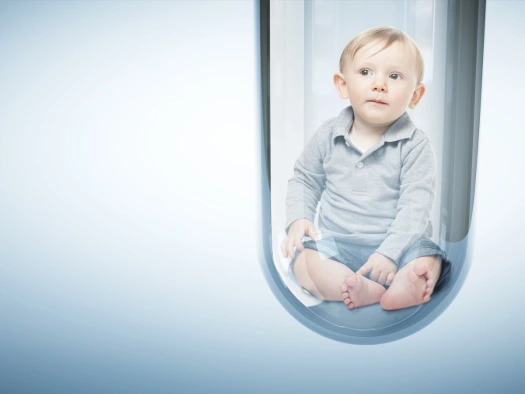In Vitro Fertilization with Questions
 02.12.2019
02.12.2019In Vitro Fertilization with Questions
1. Who is in vitro fertilization treatment applied to?
- If couples who cannot have children have not achieved results with other treatments,
- If the man has no sperm or has movement disorder or malformation,
- If the woman's eggs are reduced,
- If the woman's tubes are blocked,
- Sometimes, if it is not possible to have children for a long time due to unexplained reasons, in vitro fertilization treatment can be started.
2. Which tests are requested from couples who apply for in vitro fertilization treatment?
The main tests are spermiogram, medicated uterine film, prolactin and thyroid hormone tests. After the evaluation, other examinations may be requested if necessary.
3. What are the stages of in vitro fertilization treatment?
These are stimulation of eggs starting from the menstrual period, egg collection, fertilization of collected eggs by microinjection in the laboratory, embryo development and embryo transfer. The development of egg follicles takes up to 8-10 days. When it reaches a certain size, egg collection is performed. Since egg collection is a painful procedure, it is performed under general anesthesia. On the same day, a sperm sample is taken from the partner and microinjection is performed in the laboratory. The next day, the fertilized eggs are followed. 2-5 days after egg collection, 1 or 2 of the developing embryos are selected and transferred. Some supportive medications are used. After 10 or 12 days, a pregnancy test is also performed.
4. What are the complications of in vitro fertilization treatment?
Complication is very rare. Especially in polycystic ovary patients, excessive response of the patient's ovaries to the treatment may cause hyperstimulation syndrome. This condition requires close follow-up and treatment. Bleeding due to egg collection and side effects of medications are other problems seen rarely.
5. Can we work after treatment?
Immediately after the transfer, the patient can return to daily activity. Studies have shown that bed rest after transfer does not increase pregnancy success.
6. How to get sperm from a man who has no sperm?
Sperm is taken from the testicles by aspiration or biopsy. In the Tesa method, aspiration is performed from the epididymis region of the testicle. If sperm cannot be obtained in this way, sperm is tried to be obtained by biopsy under the microscope from the testis tissue, which we call micro-tese.
7. When will the result of in vitro fertilization treatment be get?
A pregnancy blood test is taken 10-12 days after embryo transfer.
8. Is there a greater chance of miscarriage when being pregnant by in vitro fertilization method?
It is no different from the rates of miscarriage in normal pregnancy. Since the detection of pregnancies increases by performing a pregnancy test before the expected menstrual day, the rates of miscarriage may also seem to increase.
9. Does in vitro fertilization treatment lead to premature depletion of eggs?
Such a situation is out of question. With the medications given, stimulation of egg cells that will already be depleted that month is ensured. There will not be an extra depletion.
10. How many times can in vitro fertilization be done at most?
There is no upper limit regarding this. As long as the patient's health and financial possibilities allow, in vitro fertilization can be performed. The highest success is in the first 3 applications.
11. When can we start another trial when in vitro fertilization treatment fails?
A month break is enough for the ovaries and hormones to return to normal. After a month or two, a new trial can be made.
12. Do in vitro fertilization medications lead to cancer?
Studies conducted show no increase in cancer risk in in vitro fertilization treatment.
13. Can in vitro fertilization be performed without medication?
In some cases, the patient's own egg development is monitored and in vitro fertilization treatment is performed without giving medication or ovary stimulation. Better quality but a smaller number of eggs are obtained. It can be tried in patients with advanced age, decreased ovarian reserve, and patients who have not responded with other treatments. Other advantages are the lack of medication costs and it is applicable in patients for whom medication treatment is inconvenient.
14. Is the chance of success lower when frozen embryos are given?
When we have excess embryos after the transfer, we freeze them. Sometimes, when we need to postpone the transfer for hyperstimulation or other reasons, we prefer to freeze the embryos of that month and give them another month. With today's modern laboratory techniques, there is no difference in success rates between frozen and fresh embryo transfers.
